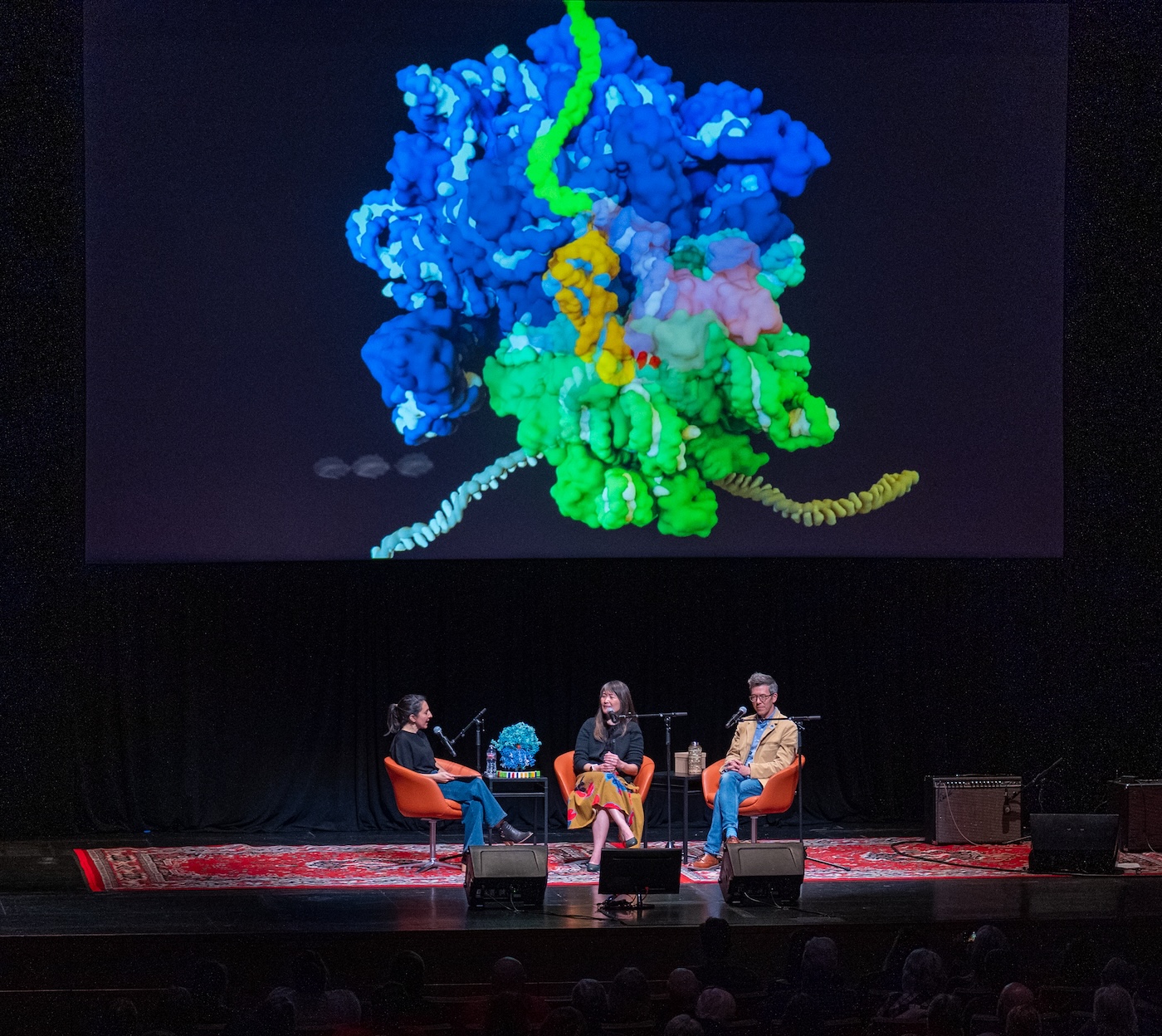How ‘Science Interpreters’ Make Hidden Science Visible
17:43 minutes

Imagine you’re diving into a cell. You’re paddling around in the cytoplasm, you’re climbing up a mitochondria. If you’re having a hard time picturing this, that’s okay! There are professionals who do this for a living.
We wanted to learn more from expert science interpreters, who take the results section of a research paper and translate it into something tangible, like a 40-foot dinosaur skeleton or a 3D animation of cellular machinery too small to see.
At a live event in Salt Lake City in March, Host Flora Lichtman spoke with Dr. Janet Iwasa, head of the University of Utah’s Animation Lab and director of the Genetic Science Learning Center; and Tim Lee, director of exhibits at the Natural History Museum of Utah, about how they bring these out-of-reach worlds to life.
Invest in quality science journalism by making a donation to Science Friday.
Dr. Janet Iwasa is head of the University of Utah’s Animation Lab and director of the Genetic Science Learning Center in Salt Lake City, Utah.
Tim Lee is director of exhibits a the Natural History Museum of Utah in Salt Lake City, Utah.
The transcript of this segment is being processed. It will be available early next week.
Dee Peterschmidt is a producer, host of the podcast Universe of Art, and composes music for Science Friday’s podcasts. Their D&D character is a clumsy bard named Chip Chap Chopman.
Flora Lichtman is a host of Science Friday. In a previous life, she lived on a research ship where apertivi were served on the top deck, hoisted there via pulley by the ship’s chef.